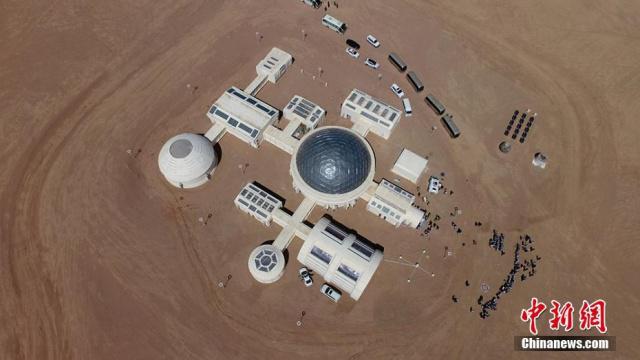Visitors get a taste of Mars at Gansu base
A simulated Mars base officially opened on Wednesday in Gansu province, aiming to popularize science and boost interest in space exploration among youth.
A simulated Mars base officially opened on Wednesday in Gansu province, aiming to popularize science and boost interest in space exploration among youth.

The site, covering 67 square kilometers in Jinchang, contains nine main parts, including an airlock module, a general control module and a biological module, and can simulate the Mars environment to teach astronauts how to survive.
Five sections, featuring space communication, extraterrestrial survival, space exploration, living in space and space development, will also be established where visitors can fully immerse themselves in the Mars experience.
Wang Jiantai, Party chief of Jinchang, said the base is a first in space education for tourists, Mars-themed tourism, astronomical research and moviemaking.
The base is a part of the country's C Space Plan, an education project for Chinese youngsters launched in October. Located 20 kilometers from the city center, the base was developed on land that resembles Martian conditions with its unique landscape and climate.
"We have designed a series of experiential, interesting and spreadable approaches to kindle people's interest and enthusiasm toward science, exploration and innovation, especially young people," said Zhao Tianshu, director of the project's education system.
In addition to allowing visitors to experience a landing on another planet, conduct extraterrestrial experiments and go about routine life in space, the base also creates dramatic scenarios for role-playing.
Bai Fan, the founder of the project, said the base is intended to boost courage as its core value and to inspire young people to face unknown challenges. They will have a more interesting and creative study experience by role-playing and teamwork during the visit, he said.
"Our science communication needs a more realistic, interactive model to arouse the youth's passion for the starry sky and help them put that passion into practice," Bai said.
Feng Chunping, executive deputy director of the China Center for Aerospace Science and Technology International Communications, said youth are key to the future of China's space exploration, and aerospace science education plays a crucial role.
But traditional education has tended to focus on displays of scientific results or screening films while failing to provide interactive opportunities, she said.
"It is not easy to make science communication attractive and interesting while maintaining precise and informative. Only by combining innovative thinking with precise science will it be possible to produce truly outstanding science communication products. The opening of the base is a new model for popularizing aerospace science."
Ma Xi'e, a 12-year-old student from a middle school in Jinchang, said she looks forward to visiting the base and feeling the mysteries of space.
"I will be able to try on a space suit, feel the space capsule and experience walking in space. These activities make space less mysterious and fill me with curiosity," she said.

